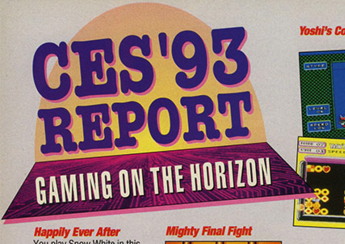

Prior to reading Console Wars, I had some perspective on video games in Japan. Actually, it’s a little unusual. My dad was in the Navy and I grew up on military bases in Japan in the 90s. I played console demos in Japanese department stores and spent plenty of time in Japanese arcades basically run by Sega. But our family and all my friends had American consoles.
And we had english TV channels, but they had weird mixes of syndicated shows. The oddest part was that instead of commercials for products, there would be commercials about military life and American history. So most of the American marketing I experienced was through video game magazines.
They talk about the impact of a particular GamePro cover where Star Fox is on the front of it. From Console Wars:
“But why?” Arakawa asked Tilden, looking at the April 1993 issue of GamePro magazine. On the cover, right there in front of them, was artwork from Nintendo’s Star Fox. Not only had this artwork been intended for Nintendo Power, but White had specifically met with Arakawa, Tilden, and Harman to discuss sharing it with outside magazines and had explicitly been told not to do so.
As long as I remember, our parents let us subscribe to at least one video gamemagazine. And any time we went to the book store I’d first look at Goosebumps for the newest release then read the game magazines.
Game Players magazine had a newsletter that, looking back, seems like weird internet before the internet became what it is today.
Something I remember is one issue where a reader wrote inn asking how the magazine makes the stitched together maps. And they said it was software that costs hundred and hundreds of dollars.
I remember picturing some kind of mega-expensive super computer. Where like they’d make the brontosaurus in Jurassic Park and then in another window they’d have Link to the Past maps. Now I realize it was probably Photoshop.
Game Players turned to Ultra Game Players then disappeared altogether. Then we switched to an EGM subscription. GamePro (of PROTIP fame) skewed younger. We had some of those but they were usually one off purchases from the book store.
Nintendo’s side project was publishing a magazine with more than a million subscribers. As far as I remember, the book store didn’t have Nintendo Power. So the only kids that had copies had subscriptions.
I remember the Star Fox cover but really had no idea it was a big deal. I was probably in 2nd grade or 3rd grade so I didn’t understand that anything was a big deal. I really had no idea that Nintendo Power was a giant monthly advertisement.
(Then one day you find out Saturday-morning cartoons were toy advertisements and the world falls apart. That’s the adult version of finding out Santa Clause isn’t real. In between those discoveries is finding out wrestling isn’t real.)